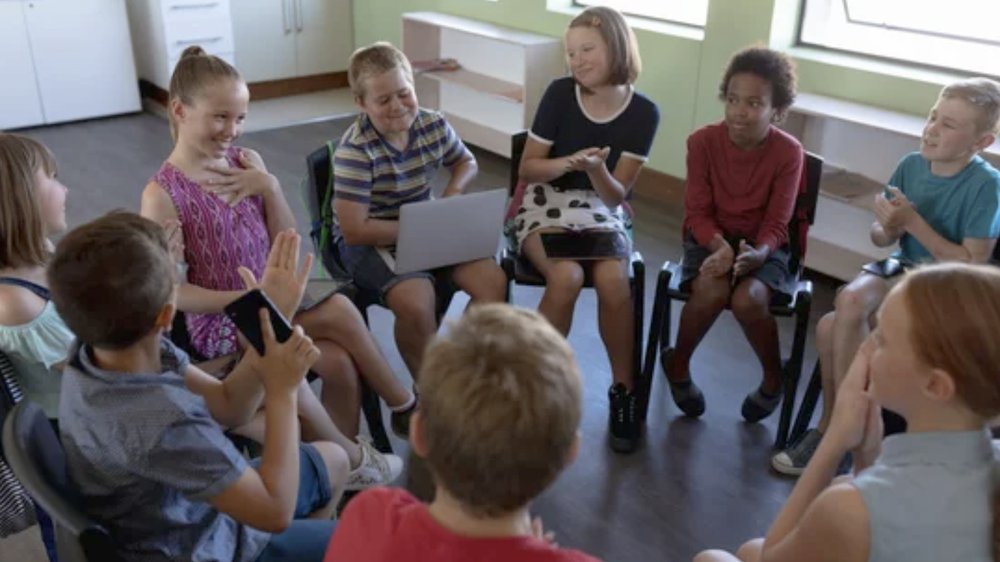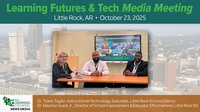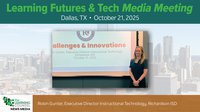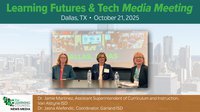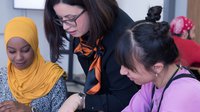Almost every educator, every teacher, will state that students must have a teacher. They stop short of saying “must have a teacher to learn,” now that it has been proven that at least fifty percent of students learn well online without a teacher in any number of learning resources and courses delivered with chatbots, not live teaching, per Learning Counsel research in 2021.
The statistics in defense of online learning, which is mostly remote, are deafeningly strong, and easy to observe directly even pre-pandemic.(1) This list by Krishna Rungta(2) collected and summarized one hundred such statistics. At the same time, it is important to mention that recent polling data from Pew Research(3) showed that a significant majority of students, 65 percent, preferred in-person learning to hybrid or remote learning options. There’s a caveat in that study’s statement, however. By positioning the 2022 realities of in-person against hybrid/remote learning there is a heavy skewing of the truth in that the reality of millions of students was campus schools directly transferring their entire master schedule to online video conference calls hour-by-hour exactly like a school day with little to no change in teaching method. It was not ideal by a long shot.
Yet there are all those statements that schools are so necessary for socializing and disciplining learners into focused acquisition of knowledge, that parents need somewhere to put their kids when they are working, and lastly, teachers all have stories of getting through to one or more students, really connecting and feeling they have caused learning leaps. Frankly, all these are true. Yes, we need human teachers.
A Different Question
What if it’s not a question of being on campus in schools or online and remote? What if learning isn’t about place but about connection and community? How we use human teachers is the question. Moreover, how we use the whole student body in the act of learning with each other.
Set aside for a minute the issues of physical social interaction like at recess since direct socialization is not universally enabled in classes. It mostly happens in between the curriculum. Set aside discipline and eyeballing sternly students to keep them on task and come up with other rewards and motivations. Remote and online learning already comes with a discipline bonus of kids not fighting and acting up while in a group because they are not physically together, at least most of the time. Set aside the idea that schools help parents babysit because there are certainly other options, at least in States with vouchers. Set aside that you might think educators cannot really connect to cause learning leaps remotely, a patent falsity if you’ve ever had to talk long-distance to any family members. Okay, yes, if all online conference-call video classes are whole group only with no breakouts for one-on-one direct instruction, then it might be harder, but why make it that way when you don’t have to? There are always independent calls, it’s a matter of scheduling purposefully for the act of teaching a group versus teaching individuals as needed. Method comes into play here, wherein lecturing for a full hour is decidedly de trop.
This School Figured it Out
One school, Dominion Prep, has created an artform for remote teaching using regular Socratic-circles as the focus of live classes. Instead of transferring all school teaching methods online, Dominion Prep focuses on the method that will work in the medium. Lecturing and many other methods are just not the same online, especially if there are no interactive or visual enhancements to watch. In fact, there is great evidence that Socratic-circles is the key to success in far more than remote learning, all learning could benefit.(4)
Along the way, Dominion Prep achieved remarkable outcomes. Students regularly win scholarships worth over $100,000, for example.
Therefore, instead of focusing on the rather juvenile binary logic of campus or online, and then fluffing those up with talk of structure like blended (tech added to classrooms), hybrid (mixing online with campus) or flipped learning (active campus learning, rest is online homework), it’s wise to look at learning as a sort of whole continuum, some only incremental shades of difference. This is infinity-based logic, a much more fitting reality on balance against the fact that there is infinite variety in human personalities, abilities, and preferences.
These six forms of learning, comments on human dynamics in learning really, are irrespective of place, but not of humans interacting. All of these are discussed too little by educators – and while they seem all the same there are nuanced differences. Dominion Prep uses all of these and is predominantly remote learning with live teaching. Learners, particularly high achievers, gifted and talented, require all of these forms of learning to be observed – especially in a primarily remote learning environment.
1. Social Learning
Summary: Social learning is a thing that happens even through things like video conferencing screens and other digital interactions. It’s a foundation for the other types of learning mentioned.
Social-learning is not the same as social-emotional learning, just learning that humans do in a social setting. Social-emotional learning is usually skills based, such as self-awareness, self-management, social awareness, relationship skills, and responsible decision-making.
Social learning theory(5), introduced by psychologist Albert Bandura, is different. It proposes that learning occurs through observation, imitation, mimicry, and modeling and is influenced by factors such as attention, motivation, attitudes, and emotions. The theory also accounts for the interaction of environmental and cognitive elements that affect how people learn. It is impossible to estimate the degree to which a quiet independent learning environment, devoid of sensory overcrowding can do, or the reverse being necessary to stimulate mental engagement. These are individual things to that student.
According to Bandura, people observe behavior either directly through social interactions with others or indirectly by observing behaviors through media. Actions that are rewarded are more likely to be imitated, while those that are punished are avoided. Children are impressionable, practically mirrors to what they see or are exposed to. They copy adults around them and peers. They do this long before their ability to evaluate importances or problems. Even adults, sometimes mindless, do this or there would be no large followings of the Kardashians.
It is for this reason that parents are careful to select which rating level of movies and which environments they will allow their children to enjoy. There have been legal fights about the violence in video games inciting children to commit violence, as well as fights about comic-drawn acts of sex in children’s library books being exposed to young children no differently than concerns over pornography that society in general has laid laws against.
2. Interactive Learning
Summary: Interactivity must be built into lessons to drive more learning with a variety of methods.
Interactive learning is learning that requires student participation. This participation can come through class and small group discussions as well as through exploration of the interactive learning materials they’re given in a digital classroom.(6) This means that there must be elements in the design of each lesson that are interactive to drive more learning.
The research into learning notes that not all kinds of interactivity are equally effective for all students. Shy students, for example, are likely to benefit less from class discussions where participation is voluntary. Technology has offered a big benefit here by allowing teachers to make and use learning materials that must be actively explored such as modules of math software that have screen images students manipulate to get to an answer.
Some of the tips to increase student participation are focused on teacher preparation of lessons that create motivation such as quizzes at the beginning of a class, reflections turned in as they walk into class and low-stakes participation points.(7) Additionally, letting students know that these exercises are part of creating an internal struggle that makes their minds have to grapple with difficulty, a desirable in the learning process. Even lectures should have these elements, although lecture-style teaching(8) has been proven time and again as one of the poorest methods because of the many different learning styles of students including reading/writing, visual, verbalizing, kinesthetic.(9)
3. Peer-Learning
Summary: Peer learning happens when students teach each other or are in situations where they are individually processing knowledge and then seeing reactions and sharing.
Today’s students have taken to social networking like fish to water; yet there is little social interaction taking place in many of today’s classrooms from kindergarten through college. The model of discourse in most classrooms is a one-way communication from the teacher to the students.
The concept of teachers doing all of the talking in classrooms is in direct contrast to the philosophy that learning is primarily a social activity (Dewey, 1963; Lindeman, 1926) and the idea that the person who is doing the work is the person doing the learning (Hurst, 1998). (10)
One of the least recognized facets of learning is what peers bring to the action. Some peer-learning is what is gained by the fact of having peers interacting with the student and with the teacher. An active-learning exercise typically begins with the instructor presenting a task to the class. Students then work on the task. After the students have finished their work, some sort of full-class processing typically takes place.(11) Students could work alone on the problem or in formal or informal cooperative groups. Then the instructor may ask the students to report and share their ideas with the class for discussion or may simply explain the answer to the students. Outcomes are influenced by the dynamic of all students.
Peer learning is also an education method that helps students solidify their knowledge by teaching each other. One student tutoring another in a supervised environment can result in better learning and retention. Why? Because to teach another, one must first fully understand a concept themselves. Verbalizing a concept and sharing the information with a peer serves to reinforce the knowledge gained.(12)
4. Cohort-Learning
Summary: Cohort-learning has an advantage online of matching like-competency levels even when the students are great distances apart. Gains in belonging and motivation help drive learning.
Cohort learning is a learning strategy prioritizing coursework or lessons that groups of students complete together in an interactive fashion. Today cohort learning can be disaggregated across time with auto-cohorting technology, so it can also randomly aggregate cohorts in a pace-based arrangement. This type of learning is typically used in K-12 and higher education settings where instructors teach the same lessons to groups of students at different class times usually within the same day or couple of days, but again, now those can be at widely different points on the calendar.(13)
Like peer learning, learners work alongside each other, providing encouragement and some competition. Working interactively and sharing perspectives means students can also lean on each other for assistance, increasing the likelihood of success.
In a cohort, learners often find a sense of belonging and motivation. This sense of community and shared purpose is a stark contrast to the isolation often felt in traditional learning environments.(14)
The rise of digital platforms has given a significant boost to cohort learning. Online cohort-based courses offer flexibility and accessibility, making it possible for learners from different geographical locations to connect and collaborate. Cohorts can be crafted to match like-competency levels. The coincident use of digital tools facilitates interactive sessions, group discussions and even whole group breakouts into cohorts, and project collaboration, mirroring a dynamic classroom environment online.
5. Vicarious-Learning
Summary: Vicarious learning involves students’ empathies and intellect to achieve deeper learning through questioning and discussions about curriculum materials.
Vicarious learning is a way of learning that allows individuals to learn from the experience of others. It is a conscious process that involves sensing, feeling, and empathizing with what other people are doing and taking mental notes, and evaluating.(15)
Vicarious learning is mostly from indirect sources. Examples are when an individual sees or hears a live situation, watches a video, listens to a story, reads a book, or imagines a situation. Reading can be an exceptional source of vicarious learning because it can engage the imagination, putting the reader into similar imaginary circumstances they are constructing in their own mind.
Good teaching, including remote learning, recognizes vicarious learning from assigned curriculum materials and captures it using artful questioning and discussions putting students in the environments and seeking their reactions. In this way those individually viewed or read learning materials are elevated to cause critical thinking and empathizing – deeper learning experiences.
6. Observational-Learning
Summary: Observational learning doesn’t need reinforcement but is sort of aura that surrounds all of learning and enhances it through good behavior modeling for students that drives learning achievement and employable skills.
Observational learning is learning that occurs through observing the behavior of others. It is a form of social learning which takes various forms, based on various processes. In humans, this form of learning seems to not need reinforcement to occur, but instead, requires a social model such as a parent, sibling, friend, or teacher with surroundings. Particularly in childhood, a model is someone of authority or higher status in an environment. In animals, observational learning is often based on classical conditioning, in which an instinctive behavior is elicited by observing the behavior of another (e.g. mobbing in birds), but other processes may be involved as well.(16),(17)
Schools leveraging observational learning will ensure their teachers and administrators are models of learning themselves. This includes preparedness, focus, and both intention to cause learning and attention on students. Exhibiting a super-awareness of student dynamics and each individual as they mentally process, question or comment, is a must. This requires smaller class sizes and an attitude of meetings, not classes. Consistency in this adult modeling drives higher achievement and commensurate behavioral attributes in students – all skills employers and higher education institutions require.
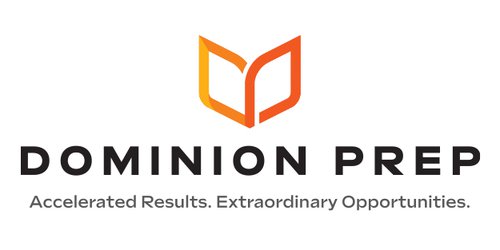
DominionPrep.Org
Dominion Prep provides students with a higher level of accelerated learning using face-to-face mastery Socratic instruction in small group classes. It is available for families across America for low cost while still delivering advanced curriculum with remote learning systems employed.
The program has over 15 years of Cognia – AdvancED - Southern Association of Colleges and Schools accreditation at score levels exceeding 300 points, which places the program at elite learning levels. Dominion Prep accreditations are recognized in all 50 US States and over 80 countries. Dominion Prep is also recognized by the NCAA, and the US Federal government and enjoys educational and research partnerships, like Baylor University and its Gifted TIP program. While classes are available supplementally, graduates are often known to receive college admissions to their school of choice with scholarships regularly exceeding $100,000.
“It’s a great program, it is what people need, they can access it from anywhere. I even use it for my son. While the initial price is a deal, people in the states adding school choice can even receive it free.” -- Dr. Todd Kettler (https://soefaculty.baylor.edu/todd-kettler/), Leading Gifted Researcher/Professor
Sources:
- Online Education: Worldwide Status, Challenges, Trends, and Implications, Shailendra Palvia, Prageet Aeron, Parul Gupta, Diptiranjan Mahapatra, Ratri Parida, Rebecca Rosner…Pages 233-241 | Published online: 26 Nov 2018, https://www.tandfonline.com/doi/full/10.1080/1097198X.2018.1542262#_i5
- https://www.guru99.com/online-learning-statistics.html
- 65% of Students Prefer In-Person Learning, New Survey Finds, George Citroner on June 7, 2022 — Fact checked by Dana K. Cassell, https://www.healthline.com/health-news/65-of-students-prefer-in-person-learning-new-survey-finds
- The benefits of Socratic circles, https://goglobal.fiu.edu/_assets/docs/socratic-circle-benefits.pdf
- How Social Learning Theory Works, Kendra Cherry, MSEd, Updated on October 14, 2022, https://www.verywellmind.com/social-learning-theory-2795074
- https://blog.genial.ly/en/interactive-learning/
- https://www.scholarlyteacher.com/post/the-perils-of-interactive-learning
- Meta-analyses of active-learning research consistently show that active-learning techniques result in greater student performance than traditional lecture-based courses. However, some individual studies show no effect of active-learning interventions. This may be due to inexperienced implementation of active learning. https://www.ncbi.nlm.nih.gov/pmc/articles/PMC4041502/
- https://bau.edu/blog/types-of-learning-styles/ and https://www.linkedin.com/pulse/some-people-learn-talking-six-types-learning-how-find-tina-ruseva/
- Is Peer Interaction Necessary for Optimal Active Learning? https://www.ncbi.nlm.nih.gov/pmc/articles/PMC4041502/
- https://scholarworks.wmich.edu/cgi/viewcontent.cgi?article=3105&context=reading_horizons
- Peer Learning – what are the benefits (students teaching each other) https://www.wgu.edu/blog/peer-learning2208.html
- Cohort learning defined (linear time) https://www.techtarget.com/searchhrsoftware/definition/cohort-learning Learning Achievements of students in cohort groups https://www.tandfonline.com/doi/pdf/10.1080/07377366.1998.10400354
How Cohort-Based Learning Is Transforming Online Education, Serenity Gibbons https://www.forbes.com/sites/serenitygibbons/2021/12/17/how-cohort-based-learning-is-transforming-online-education/?sh=719aed5c23eb
- Benefits of Cohort-based Learning https://www.linkedin.com/pulse/10-reasons-why-cohort-learning-paving-way-future-education-badran-7kz2f/
- What is Vicarious Learning? https://www.valamis.com/hub/vicarious-learning
- What is Observational Learning? https://en.wikipedia.org/wiki/Observational_learning
- https://www.valamis.com/hub/vicarious-learning

